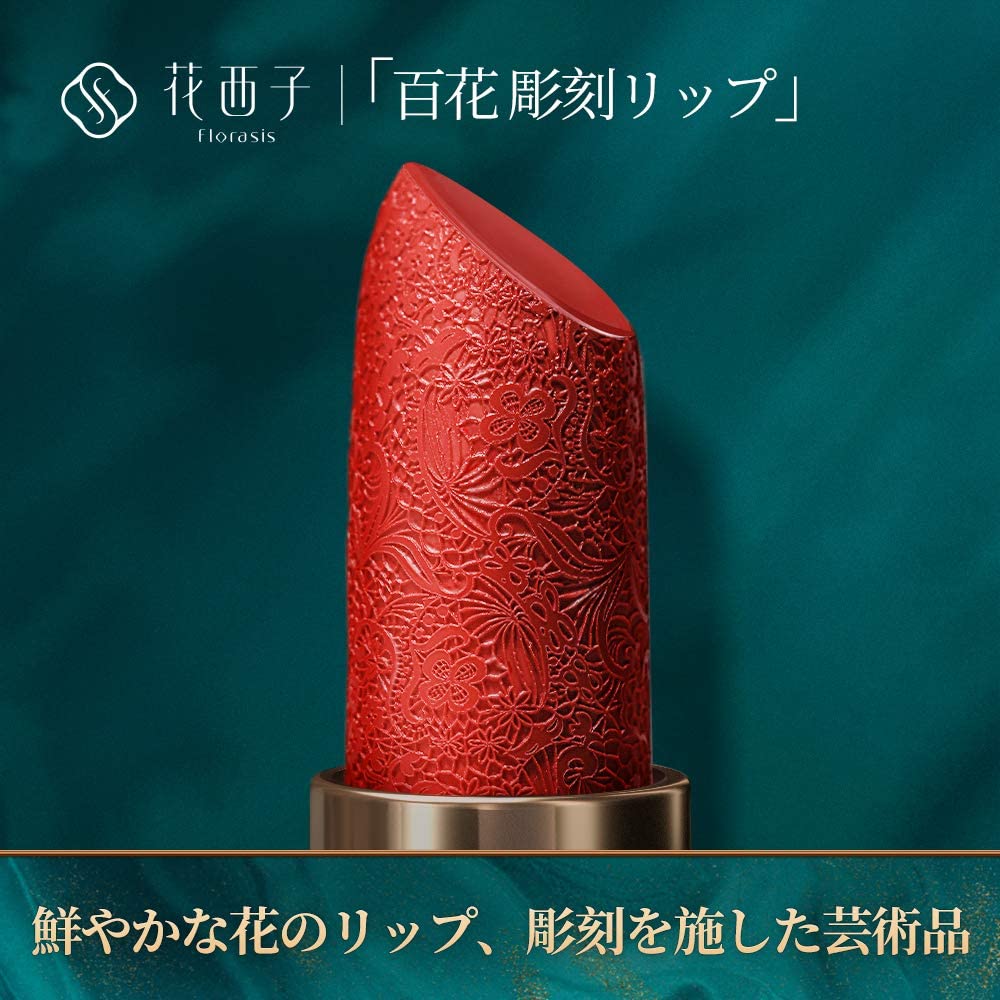Chinese make-up brand Florasis’ co-founder Freeman shares how it rode on the Chinese-ness trend to disrupt the market amid stiff competition and become an internet hit virtually overnight.
This article is part of a Spotlight series on what marketers can learn from DTC disruptors in China. Read more
Key insights
- The Florasis style relies on ancient Chinese recipes to produce cosmetics incorporating flower essences and herbal extracts.
- Products are co-created with users who evaluate samples and give the makeup company feedback on their experiences.
- Among its six key pillars for growth are the insistence on Oriental heritage, artisanal R&D and user co-creation.
The "Chinese-ness" trend – known as guochao, where brands and products incorporate traditional Chinese style and cultural elements – has been hot in recent years. Will it be short-lived and how does Florasis differentiate itself from other brands riding this wave?
Florasis caught the Chinese guochao trend but we don't define ourselves as a "Chinese guochao brand". Our ultimate goal is to become the best cultural brand in China and to create a unique “Florasis style” of using ancient Chinese recipes for cosmetics and makeup with flower essences and herbal extracts. We are dedicated to exploring Oriental aesthetics, fusing traditional Chinese culture with modernity.
From the very beginning, our brand insisted on creating products and content with such characteristics. Our raw materials, skincare formulas, brand colours and brand fonts shape the uniqueness and exclusivity of Florasis’ brand positioning.
Your marketing is powerful because it is at the core of the customer-brand relationship. What does Florasis focus on when creating new products or portfolios and how does it impact the business in the medium and long term?
Florasis products are actually co-created by the brand and our users, and we have always met the needs of our users when launching our products. We started our “user co-creation” program long before we formally launched Florasis. We invited users to become our “product experience officers” (we called them “flower companions”) to evaluate each of our products and give us feedback on their experiences. This project required a lot of commitment as we had to screen a large number of product experience officers, send large numbers of samples, follow up on each user's feedback, repeatedly tweak the skincare formulas, and optimise the products. Each task required a lot of manpower and time.
But because of user co-creation, our product development is a combination of “slow work” and “fast iteration”.
We were “slow” because we needed to tweak the formula little by little, polish the product design little by little, and put it to the test little by little. That's why we were slow – so slow that we are often pushed by our users to come up with new products.
But we were also very “fast” because we have a good foundation for the products after all the initial refinements and with the advice of our flower companions, we can identify problems with the products faster than before and then iterate and optimise.
For example, our Florasis eyebrow pencil was upgraded seven times within four years, thanks to co-creation with users.
User co-creation has also led to transformative innovation. For example, our fleece flower root eyebrow powdered pencil is the first of its kind by Florasis as it combines the slimline feel of an eyebrow pencil with the soft and non-clumping nature of brow powder. This was created based on user-driven needs, combined with breakthroughs in research and development.
To date, the Florasis brand has over 100,000 product experience officers. Under the user co-creation model, most of Florasis' popular products have achieved a Tmall rating of 4.9 out of 5, which means our products are widely recognised by users.

Freeman, Co-founder, Florasis
In the development of our brand, product quality is core. Marketing and promotions follow the core and amplify the effect of product quality. Florasis always insists on making good products and good products come first before any marketing and promotional activities launched around them.
As mentioned earlier, we are dedicated to exploring Oriental aesthetics. So both our products and marketing activities are always aimed at promoting Oriental beauty. For example, in 2019, we launched a gift box inspired by the 10 scenes of West Lake and in 2020, we launched a gift box inspired by Miao silver jewelry.
As a new brand that mainly sells online, will you expand into offline channels in the future?
Florasis' main sales channels are currently focused online, including major e-commerce channels such as Tmall, JD and Vipshop. At the same time, on March 1, we officially launched on Amazon Japan, opening an overseas online channel.
It is worth mentioning that our domestic lipstick product "Concentric Lock Lipstick", priced at RMB 219, was sold for 6,129 yen (RMB 371) on Amazon Japan – a price that exceeded international luxury brand Chanel’s lipstick, which sold for only 5,270 yen (RMB 315) on Amazon Japan.
Our higher price did not affect the enthusiasm of Japanese consumers and the "Concentric Lock Lipstick" entered the top three list of hourly lipstick sales on Amazon Japan on the first day of its launch.

Although Florasis' battleground is mainly online, will you incorporate traditional channels such as physical shops, outdoor and TV into your overall strategy?
In Florasis' view, there is no distinction between traditional and new channels – they are all part of integrated marketing.
Building a brand has always been a slow process but in 2017, this perception was shattered in China as disruptor brands, including Florasis in Hangzhou, emerged in the market and completed their brand-building journey in an average of two years to become an internet hit generating hundreds of millions in sales amid fierce competition. Can you share with us your brand-building memories from the early days of your business?
Most memorable was when we launched our first “sculpted” lipstick featuring Chinese beauty motifs actually micro-engraved on the lipstick itself. The sculpted lipstick was un precedent – it was the world's first combination of Oriental makeup innovation and Chinese manufacturing capabilities.
Florasis has always been committed to the promotion of Oriental beauty and our branding is distinct because of our emphasis on images associated with traditional China. We initially had mixed feelings due to the technical difficulties developing the sculpted lipstick but we didn't give up and persevered to overcome the odds.
The brand positioning of Florasis is described in eight words: 东方彩妆,以花养妆 (Oriental-style make-up, nourished with flowers).
Firstly, we want to give Chinese tradition a fashionable twist and create makeup products with Chinese cultural characteristics.
Secondly, we want to use flowers and floral extracts as ingredients in our makeup composition because they are safe, delicate, gentle and skin-friendly. They also produce a more natural and flattering look.

The Florasis co-founder
How is Florasis forging direct consumer relationships that are trusted and value-driven?
In the process of building consumer relationships, Florasis has always considered the end user to be one of the most important partners in the development of the brand. As you can see, during our product development process, we invited consumers to give us their opinions directly, which was very valuable to us. Whether it is before or after a product launch, Florasis always listens to our users and rewards them with the best products upon their feedback. For example, the Florasis loose powder puff used to be white; many users commented that because both the powder and the puff are white, it was not possible to see the powder on the puff clearly and control the amount taken. We took their concerns into consideration.
The channels through which Florasis communicates directly with users include SMS, our mobile app, our WeChat customer service and so on.
As long as you are a Florasis user, your opinion will be heard.
In addition to providing products and product tutorials, we also paid attention to our users and their daily lives, especially during natural disasters and extreme weather when we will send messages expressing solidarity.
As an emerging “disruptor brand”, what aspects of bigger, older brands do you value most and what would you like to learn from more established competitors?
The Florasis team is guided by long-termism and sales is not the main goal. This year, on the occasion of our fourth anniversary, Florasis announced our brand vision of promoting Oriental beauty for a hundred years. Our goal is to become a century-old, national makeup brand. On Weibo, our anniversary hashtag reads “Florasis is 96 years away from being a 100-year-old brand”.
In the future, Florasis will look up to actual century-old brands as our teachers and always have a humble heart and reverence.
You say that Florasis is not sales-oriented but every brand is bound to face the pressure of KPIs, especially in post-pandemic economic conditions. How do you reduce the impact of the COVID-19 crisis on the brand and its market share?
From its inception, Florasis has had six key pillars of growth:
- Insistence on Oriental heritage
- Insistence on artisanal research and development
- Insistence on flower-based makeup
- Insistence on user co-creation
- Insistence on quality service
- Insistence on social responsibility
These six pillars have brought Florasis to where it is today and will take it into the future.
Read more in this Spotlight series
Fast-growing brands making fast-moving goods: Why China's FMCG challengers are special
Alexander Kremer and Cedric Jäger
Brand in action: How NaiTangPai made it big with bras
Michael Zhang
DTC disruptors: Consumer sentiment data
Spotlight data report

